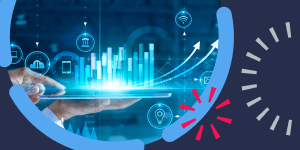Recently, we discussed the main mistakes in the implementation of SAP systems that customers face. Today we are talking about the main stages of the implementation of SAP systems, the observance of which will make the process of introducing new software more pleasant and comfortable.
Planning
So, the first stage, which cannot be omitted in any way, is planning. We will not stop emphasizing how important this is. The correct setting of goals and objectives, the determination of the budget, the correct sequence of actions and the determination of deadlines require detailed consideration. It is important that your plans are realistic and that you think ahead of time about possible delays, unnecessary costs and other unforeseen circumstances. It is impossible to predict everything, but you should keep in mind that not everything always goes as in does in your perfect scenario.
Testing
If you think that you need to test the system as problems arrive, then you are mistaken. As soon as the process of implementing new SAP software begins, it is necessary to start testing the system. Even at the first stages, you need to observe the internal processes and immediately make sure that everything is going as it should. SAP system testing will be carried out by the testing team, which will conduct make checks three times during the entire implementation of SAP systems – at the beginning, in the middle and at the end.
Business processes transformation
The next mandatory step in the implementation of the SAP system is the transformation of business professions that need to be transferred to your new system. In any case, SAP products will somehow differ from what you used before, which affects business processes. You need to take into account the gaps and differences that you will encounter, understand what could potentially be difficult. Make a list of processes and work items that need special attention or improvement – this way it will be easier for you not to get confused and not lose sight of them.
Informing
The next step is informing. Since the implementation of the new system includes changes in the work of a large number of employees, each of them must be informed about how his work processes will change and how the relationship between departments will now take place. You can conduct special training for your employees and publish instructions – so that employees have access to the right information at any time.
Production
The penultimate stage is the transfer of all processes from pre-production to production. Once all data is finally transferred, you should make sure that all old systems will no longer be used. At this stage, the work of all dependent applications is configured, the optimal performance of the system, and final testing takes place.
Bam! Your system is up and running. All that’s left is to get in touch with the support team to make sure they’re in touch and able to get through with problems if they arise.











